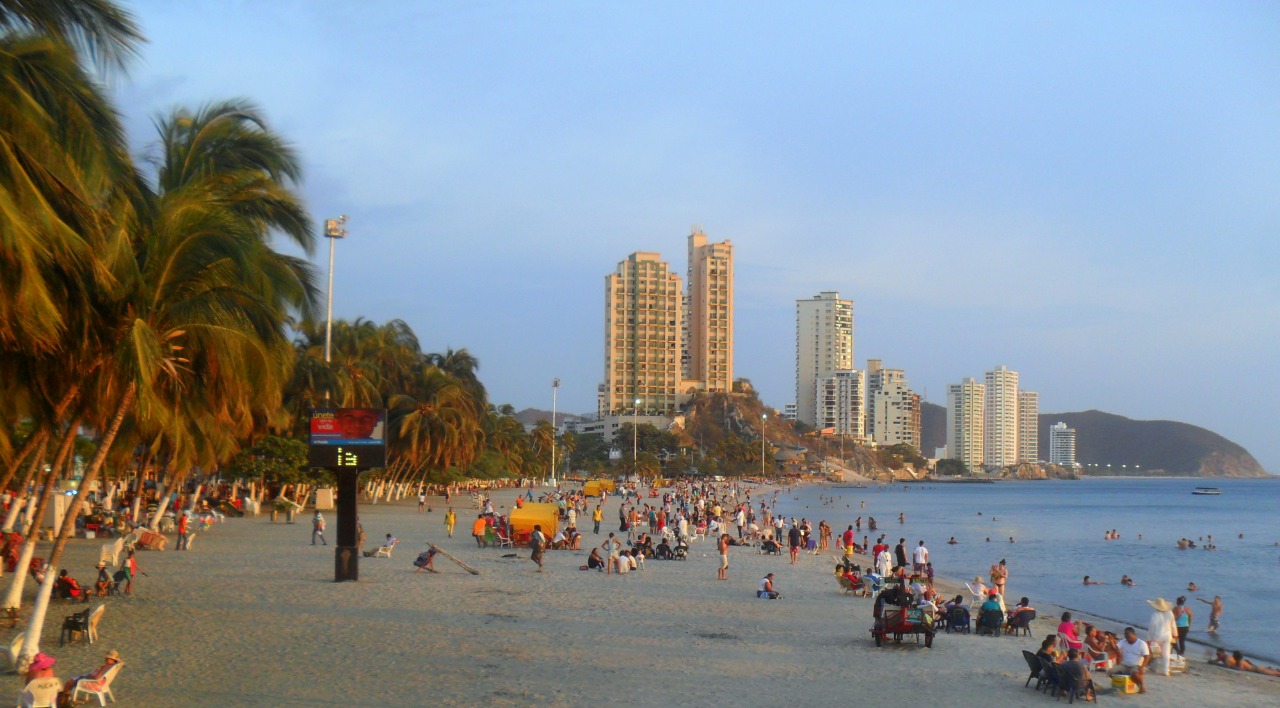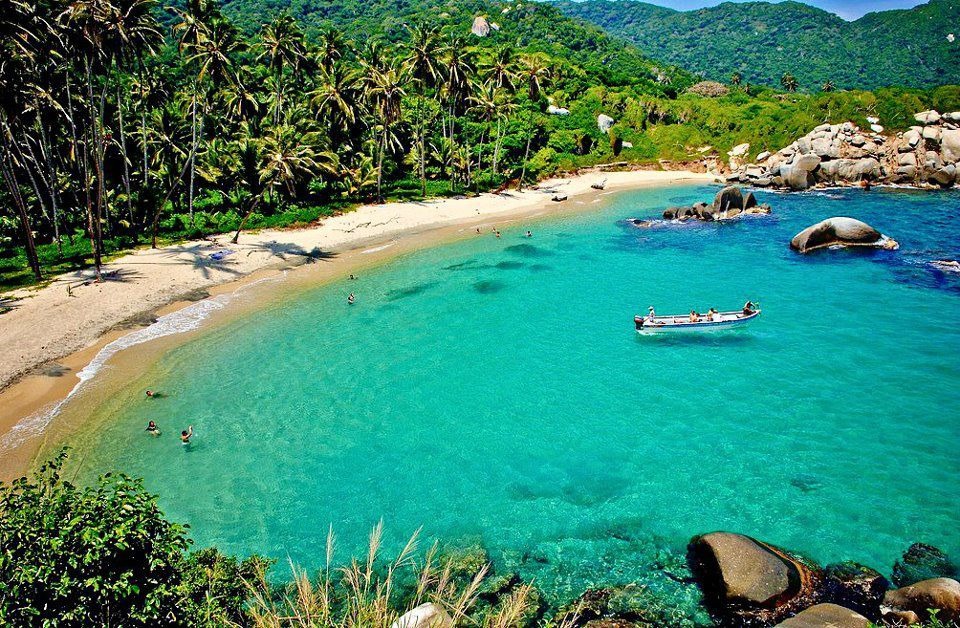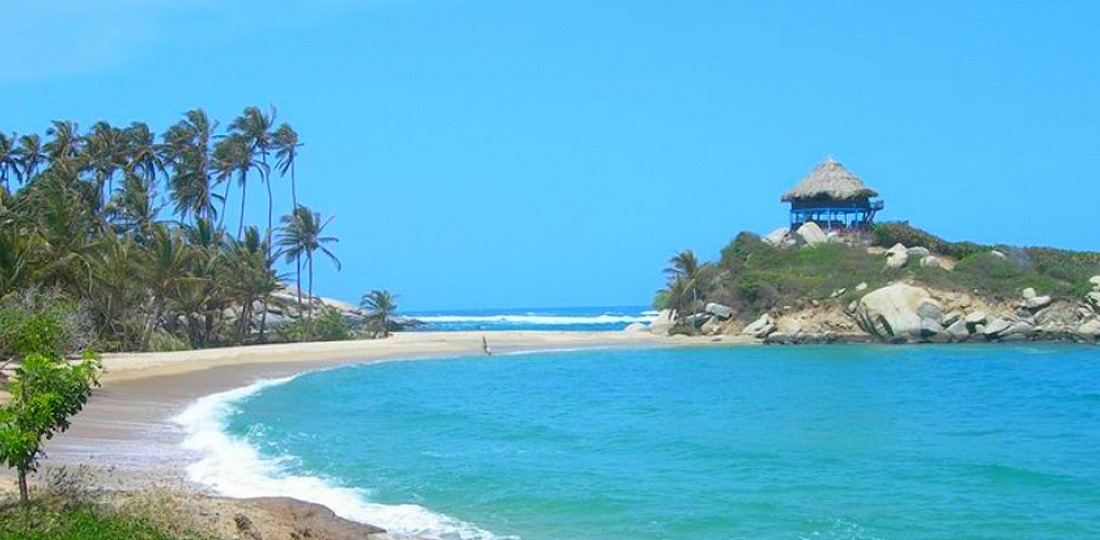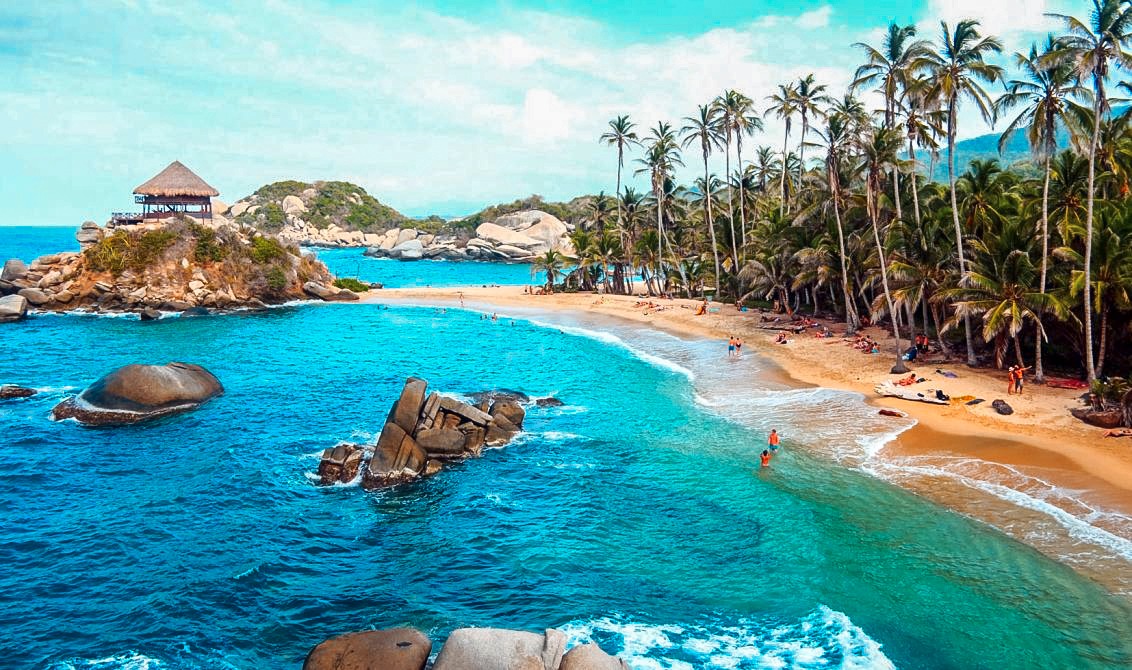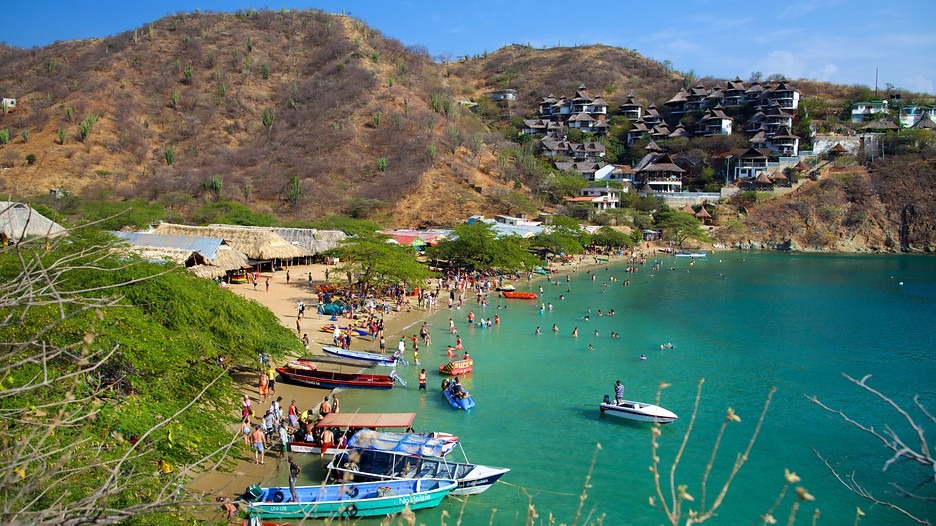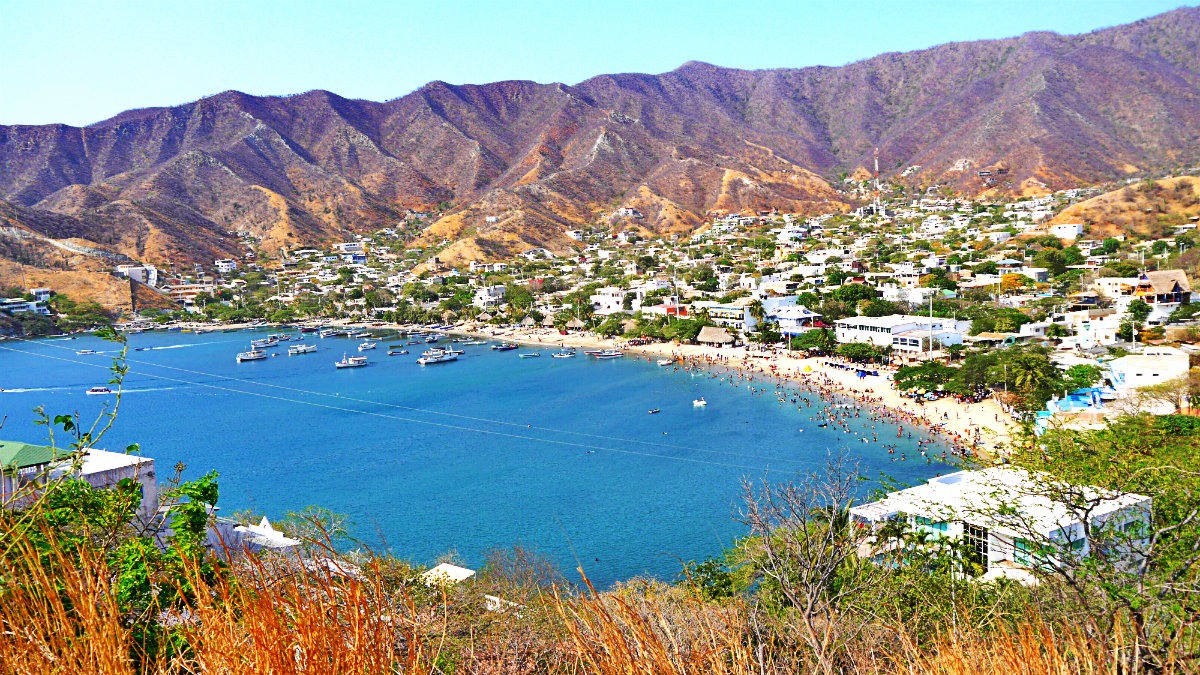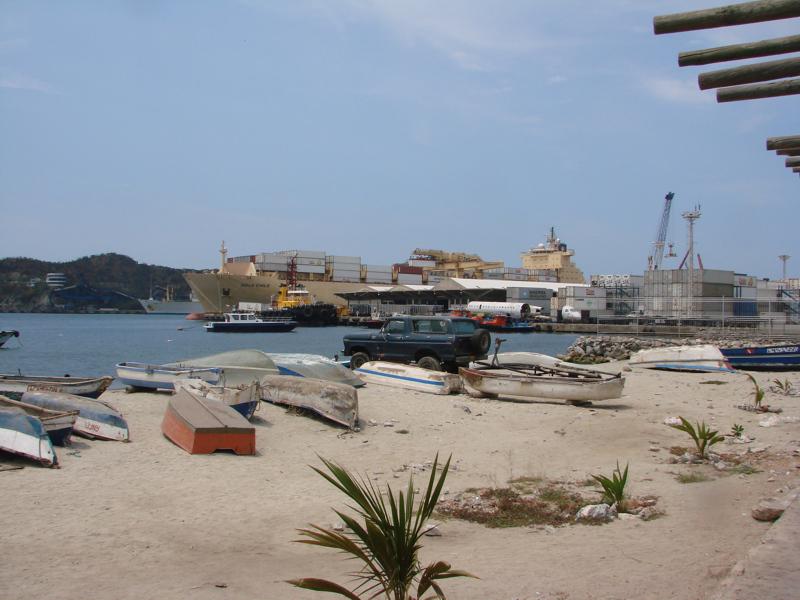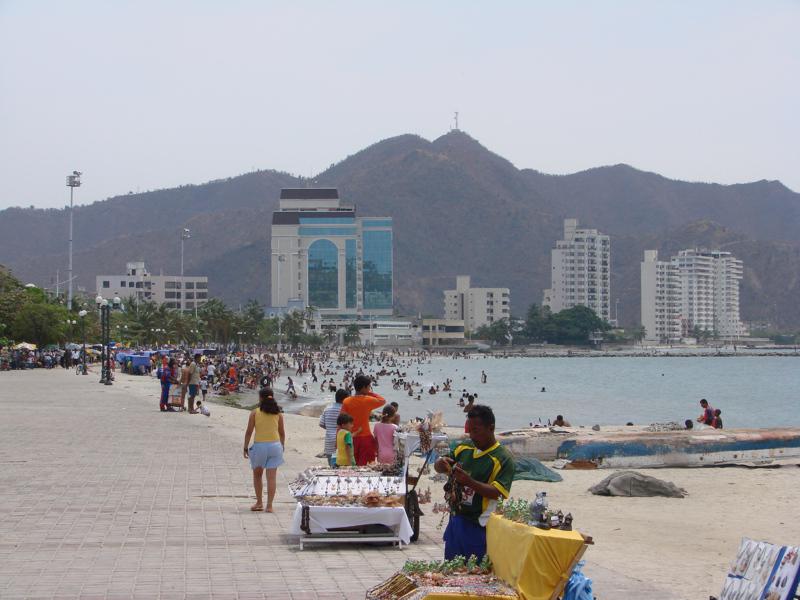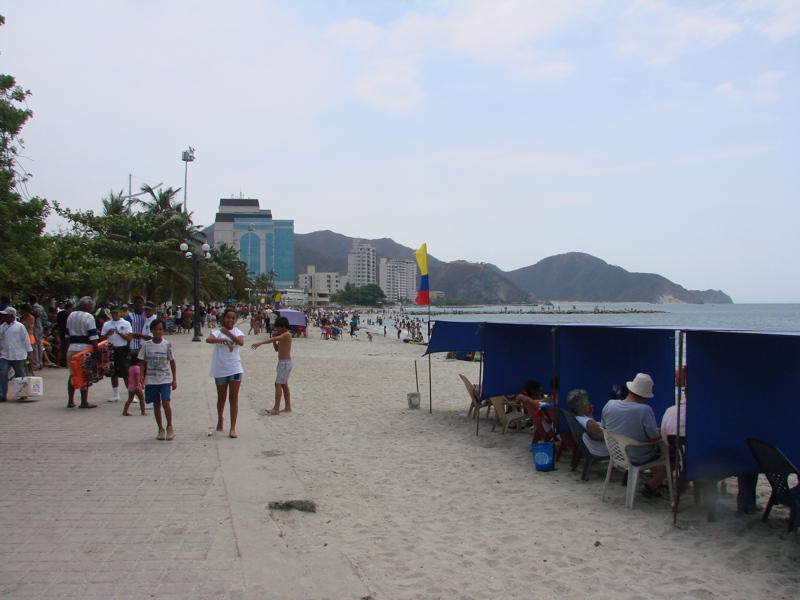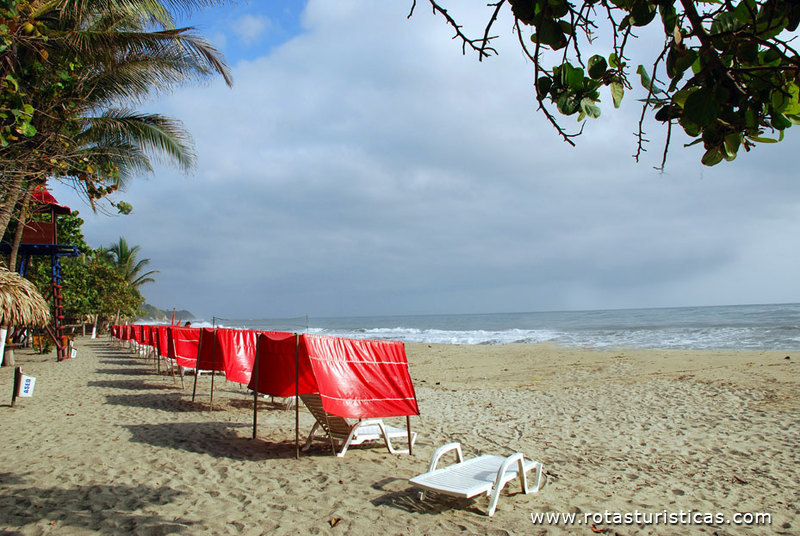Pictures of: Santa Marta, Colombia
Location map
Airports
Hotels and other Accommodation
What to visit
Where to Eat
Where to have fun
Consulates & Embassies
World Nomads
The Travel Insurance with the largest coverage

The Travel Insurance with the largest coverage

Santa Marta
Santa Marta is a capital city of the department of Magdalena and the third largest urban city in the Caribbean Region of Colombia, after Barranquilla and Cartagena.
Founded on July 29, 1525, by the Spanish conquistador Rodrigo de Bastidas, it was the first Spanish settlement in Colombia, and is the oldest in the city and the second oldest in South America.
The capital of the department of Magdalena is located on the shores of the Caribbean Sea, at the foot of the magnificent Sierra Nevada de Santa Marta, the highest mountain by the sea, a place where the charms of a very old nature reserve joins the wisdom of the people ancestral, and that makes it a tourist destination of excellence.
The capital of the department of Magdalena is the sum of the sites, details and characteristics to which a dedicated reference should always be made. Santa Marta - the railroad, land and sea port - is not far from the banana plantations and the city of Aracataca, the land of the prodigious Gabriel García Márquez, the incomparable chronicler of the city and the region.
Founded on July 29, 1525, by the Spanish conquistador Rodrigo de Bastidas, it was the first Spanish settlement in Colombia, and is the oldest in the city and the second oldest in South America.
The capital of the department of Magdalena is located on the shores of the Caribbean Sea, at the foot of the magnificent Sierra Nevada de Santa Marta, the highest mountain by the sea, a place where the charms of a very old nature reserve joins the wisdom of the people ancestral, and that makes it a tourist destination of excellence.
The capital of the department of Magdalena is the sum of the sites, details and characteristics to which a dedicated reference should always be made. Santa Marta - the railroad, land and sea port - is not far from the banana plantations and the city of Aracataca, the land of the prodigious Gabriel García Márquez, the incomparable chronicler of the city and the region.
Tourism
Summing up the characteristics of a destination like Santa Marta are the more than sufficient reasons to exalt this tropical city and its surroundings as one of the most important destinations for foreigners and nationals.
Thanks to these reasons, the 1991 Colombian Constitution declared Santa Marta a cultural tourist center and historic center.
Well known as having the most beautiful bay in America, Santa Marta is projected as a modern city, thanks to its infrastructure that develops and planned for years to come.
With this, there will be a harmonious interconnection between the port of Santa Marta, the historic center, and the beaches of El Rodadero.
Along the beaches of Santa Marta, the sea is calm, due to the protection offered by the mountain range. Experts say the wind passes without affecting the area, which is saved from hurricanes that affect other coastal areas of the Atlantic.
The beaches of Santa Marta have never suffered from this natural phenomenon
With the tranquility provided by these white sands and gentle waves, Santa Marta and the landscapes offer tourists the sun and a warm and happy looking environment.
Boats depart daily from El Rodadero to El Acuario and Playa Blanca, the latter a peaceful spot for snorkeling.
However, there are more beaches near the city, each with its own characteristics. Examples are: Bahía Concha with its forest landscapes; Taganga, a typical fishing village where several diving schools have their headquarters, and the beaches that are part of the Tayrona National Natural Park, being the main Arrecifes, Cañaveral, and San Juan del Guía.
The enjoyment of the beaches and small coves that border Santa Marta is just one of the things to do in this paradisiacal destination. The best reference that many people have about the area is the National Natural Park Tayrona and, of course, the Sierra Nevada de Santa Marta, with the superb nature and spirituality that is perceived in its slopes by virtue of the indigenous families that inhabit - people for whom respect for flora and fauna is sacred.
It is said that the Sierra Nevada de Santa Marta, is an icon of the region in front of its imposing 6,000 meters high by the sea, the inspiration it provokes, and the mysticism of its inhabitants. Kogi, Arzario, and other Indian families explain the wisdom and past legacy of their Tayrona ancestors in places embedded in the jungle, such as Pueblito and Lost City.
In addition to its beautiful secluded beaches, there are safe dive sites, camping sites, and tree-lined ecological trails, over 200 species of birds and other species such as monkeys, deer and possums which are, in the end, their main population.
The historic center of the city is romantic, colonial and very well preserved. The Cathedral, the Santo Domingo Convent, the Gold Museum Tayrona, and the Town Hall stand out as historical, traditional sites.
In the municipality of Mamatoco, at a distance of five kilometers from the center of Santa Marta, is the Quinta de San Pedro Alexandrino, the farmhouse loaned to the Liberator Simón Bolívar in 1830, and the place where he spent his last days. Simón Bolívar died in this country house that preserves documents and important objects of his life and work.
Thanks to these reasons, the 1991 Colombian Constitution declared Santa Marta a cultural tourist center and historic center.
Well known as having the most beautiful bay in America, Santa Marta is projected as a modern city, thanks to its infrastructure that develops and planned for years to come.
With this, there will be a harmonious interconnection between the port of Santa Marta, the historic center, and the beaches of El Rodadero.
Along the beaches of Santa Marta, the sea is calm, due to the protection offered by the mountain range. Experts say the wind passes without affecting the area, which is saved from hurricanes that affect other coastal areas of the Atlantic.
The beaches of Santa Marta have never suffered from this natural phenomenon
With the tranquility provided by these white sands and gentle waves, Santa Marta and the landscapes offer tourists the sun and a warm and happy looking environment.
Boats depart daily from El Rodadero to El Acuario and Playa Blanca, the latter a peaceful spot for snorkeling.
However, there are more beaches near the city, each with its own characteristics. Examples are: Bahía Concha with its forest landscapes; Taganga, a typical fishing village where several diving schools have their headquarters, and the beaches that are part of the Tayrona National Natural Park, being the main Arrecifes, Cañaveral, and San Juan del Guía.
The enjoyment of the beaches and small coves that border Santa Marta is just one of the things to do in this paradisiacal destination. The best reference that many people have about the area is the National Natural Park Tayrona and, of course, the Sierra Nevada de Santa Marta, with the superb nature and spirituality that is perceived in its slopes by virtue of the indigenous families that inhabit - people for whom respect for flora and fauna is sacred.
It is said that the Sierra Nevada de Santa Marta, is an icon of the region in front of its imposing 6,000 meters high by the sea, the inspiration it provokes, and the mysticism of its inhabitants. Kogi, Arzario, and other Indian families explain the wisdom and past legacy of their Tayrona ancestors in places embedded in the jungle, such as Pueblito and Lost City.
In addition to its beautiful secluded beaches, there are safe dive sites, camping sites, and tree-lined ecological trails, over 200 species of birds and other species such as monkeys, deer and possums which are, in the end, their main population.
The historic center of the city is romantic, colonial and very well preserved. The Cathedral, the Santo Domingo Convent, the Gold Museum Tayrona, and the Town Hall stand out as historical, traditional sites.
In the municipality of Mamatoco, at a distance of five kilometers from the center of Santa Marta, is the Quinta de San Pedro Alexandrino, the farmhouse loaned to the Liberator Simón Bolívar in 1830, and the place where he spent his last days. Simón Bolívar died in this country house that preserves documents and important objects of his life and work.
Gastronomy
Santa Marta cuisine is a cultural legacy, heavily influenced by the Spanish and the African, resulting in an excellent combination of fish dishes and regional ingredients.
In this destination you will find a great variety of dishes and among the main ones, we can mention caramñolas and arepas de huevo, that are a type of corn cakes stuffed with raw egg and served with hot peppers.
Seafood meals are part of the city's menu.
Another typical dish is rice with coconut, along with the variety of dishes based on "guinean green", unripened bananas.
As in most regions of the country, it is customary to accompany any dish with refreshing fruit juices.
In addition, typical sweets made of coconut and yam, constitute a very important part in the gastronomic identity of the region.
In Santa Marta, one can still enjoy a variety of restaurants.
In this destination you will find a great variety of dishes and among the main ones, we can mention caramñolas and arepas de huevo, that are a type of corn cakes stuffed with raw egg and served with hot peppers.
Seafood meals are part of the city's menu.
Another typical dish is rice with coconut, along with the variety of dishes based on "guinean green", unripened bananas.
As in most regions of the country, it is customary to accompany any dish with refreshing fruit juices.
In addition, typical sweets made of coconut and yam, constitute a very important part in the gastronomic identity of the region.
In Santa Marta, one can still enjoy a variety of restaurants.
Weather
Santa Marta has a tropical climate, mostly dry, with an average annual temperature of 27ºC (80ºF). Average temperatures do not vary much throughout the year, however, the city has a dry season and a rainy season. February is the driest month, while October is the driest, both with an average temperature of 28 ° C (82 ° F).
The rainy season (May to November) being September and October the rainiest months, with an average of 130 mm of precipitation.
As in the rest of the year, Santa Marta has a warm climate, with average high temperatures of 32 ° C (89 ° F) and minimum temperatures of 23 ° C (73 ° F).
The dry season (December to April) this season having a very dry and stuffy climate with high average temperatures of 32 ° C (89 ° F) and lows of 23 ° C (73 ° F).
The rainy season (May to November) being September and October the rainiest months, with an average of 130 mm of precipitation.
As in the rest of the year, Santa Marta has a warm climate, with average high temperatures of 32 ° C (89 ° F) and minimum temperatures of 23 ° C (73 ° F).
The dry season (December to April) this season having a very dry and stuffy climate with high average temperatures of 32 ° C (89 ° F) and lows of 23 ° C (73 ° F).
Other tourist destinations in:
Colombia
Colombia
Other world tourist destinations
Why to book with BOOK HOTEL OPORTO
The best prices
Our partnerships with the world´s largest operators offer research on the best market prices.
More options
At Rotas Turisticos you can book the hotel, buy the air ticket, book the transfer from the airport to the hotel and vice versa, book the local excursions, rent the car, take travel insurance and consult the places to visit and where to go.
Holiday Tips & Destinations
Hundreds of holiday destinations with all the options that allow you to easily choose the destination that best suits your dream vacation.
BOOK HOTEL OPORTO
Links

